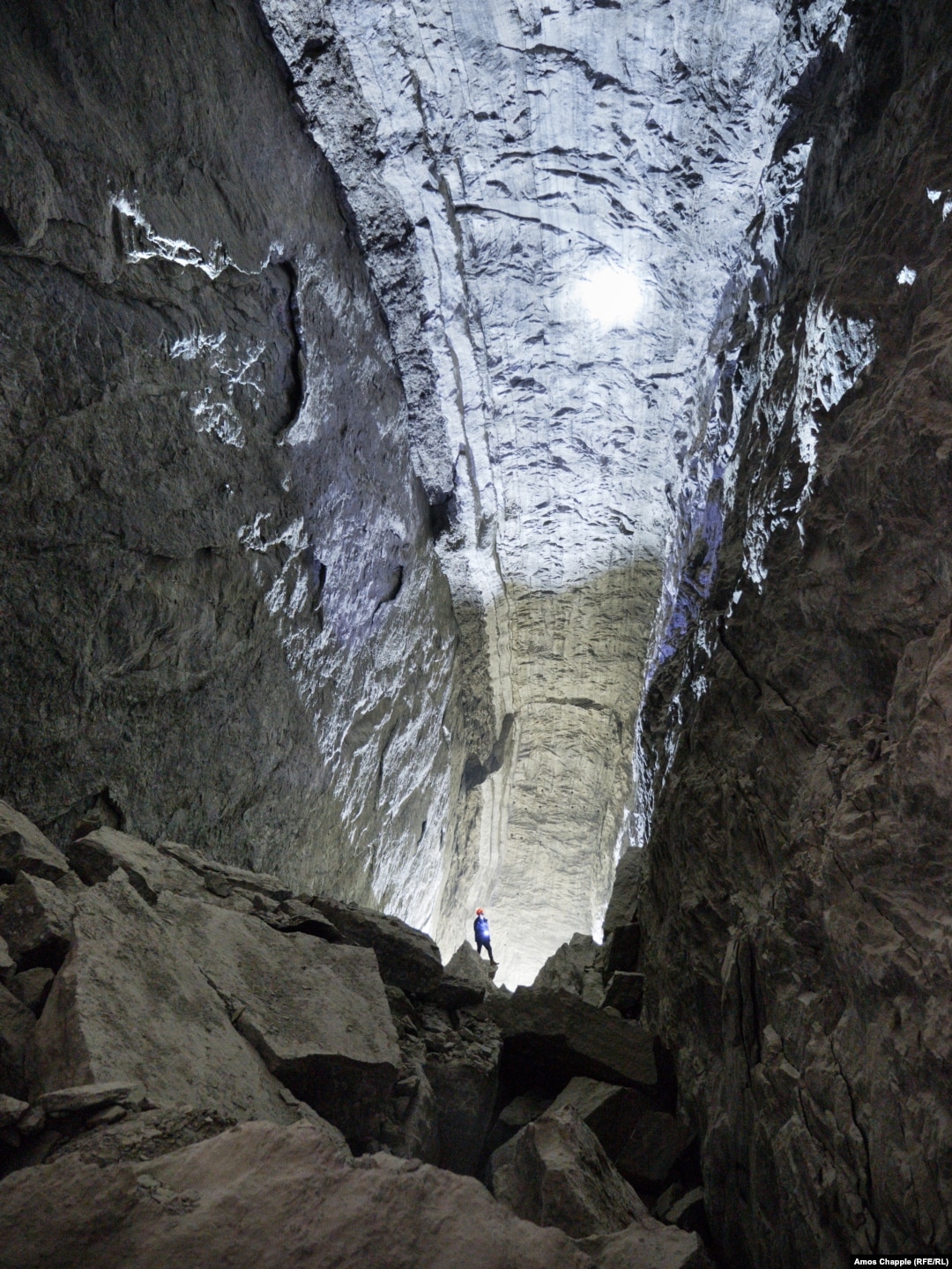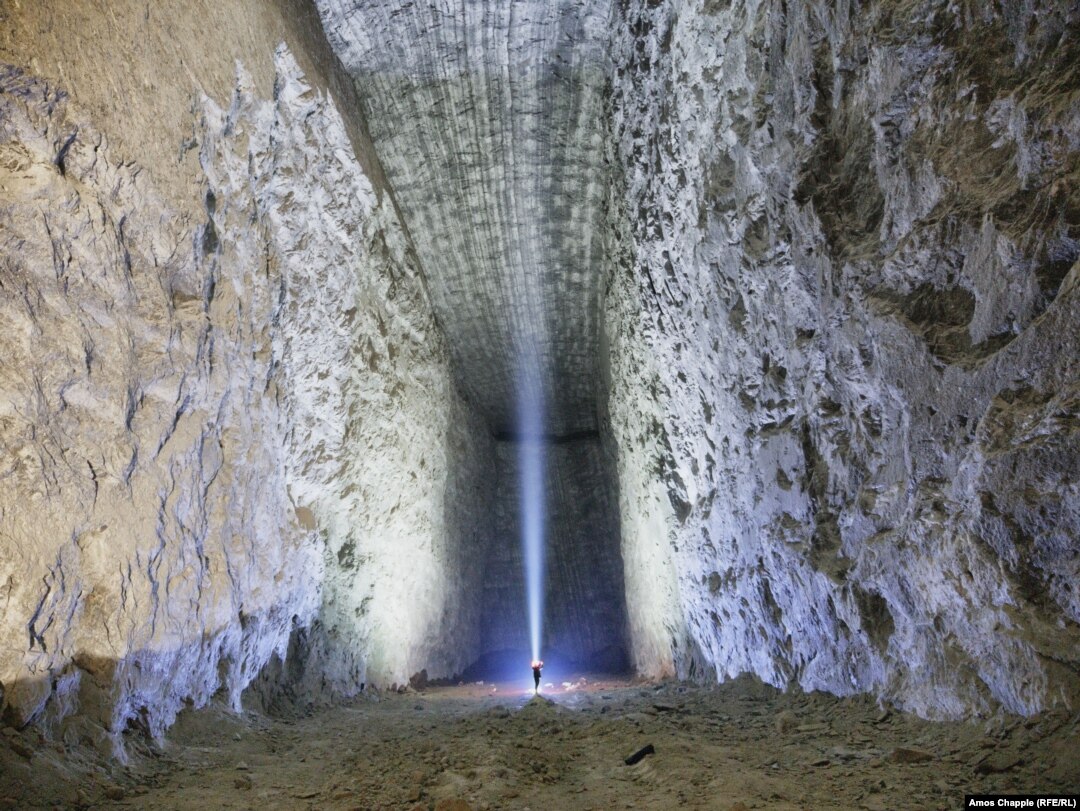Yerevan's Vast, Salty Underworld

Seen from aboveground, the Avan Salt Plant appears as a nondescript industrial property in the north of Yerevan.

But 235 meters beneath the property are several spectacular chambers of pure rock salt that have supplied Armenia with much of its salt for more than 50 years.

Many in Yerevan are unaware of the scale of the salt-mining operation beneath their feet, which includes kilometers of tunnels, as well as a specialized hospital.
Andranik Avetesian is the technical director of the Avan Salt Plant and has worked underground in the mine since soon after operations began there in the late 1960s.
Avetesian plays pool inside the hospital, 235 meters beneath Yerevan.
The veteran underground worker says explorations were first made in the Yerevan suburb of Avan in the 1940s as Soviet authorities were searching for the same kind of oil deposits that had made Baku a boomtown in the early 1900s.
Soviet-era signs inside the mine.
Although the Yerevan suburb offered up no oil, Soviet engineers chanced on the vast salt seam running under the Armenian capital, and a salt mine was later established.
A bed inside the Republican Speleotherapy Center in the Avan salt mines. The subterranean hospital is designed to aid people with respiratory illnesses, largely through exposure to salty air during hours-long sessions underground.
Children’s toys in the hospital of the Yerevan salt mine.
The benefits of salt mine "speleotherapy" are disputed, but salt miners do not generally suffer the same respiratory ailments common among coal miners.
Avetesian directs operations from a control room inside the mine.
Due to the toughness of the salt deposits under Avan, the miners use dynamite to blast the rock salt into chunks, from which it is further processed.
Avetesian walks a corridor carved from pure salt.
The head miner says he was underground when the 1988 Armenian earthquake struck the north of the country, killing some 38,000 people and rattling the capital, Yerevan.
“We didn’t feel a thing,” he recalls. “Nature is so surprising. We got a call to finish our shift early, and when we got up to the surface they told us the earthquake had happened. We had no idea.”
A sign warning of a mine railway train inside the Avan salt mine.
In terms of active mining operations, Avan is nearing its twilight years.
Miners inside a section of the mine.
Around 3 million tons of salt have been extracted from the seam below Yerevan, with an estimated 600,000 tons remaining.
A woman whose job it is to monitor the elevators that whiz people -- and salt -- to the surface.
A total of 230 people work for the salt mine, with a small team of 25 miners who actively mine salt.
A miner holds chunks of rock salt.
A spokesperson for the mine estimated that around half of all of Armenia's table and technical salt is sourced from the Avan property. Almost none is exported abroad.
Salt from the Avan mine on sale in a supermarket in Echmiadzin.
Owners of the Avan mine are looking to monetize the mine through expensive underground tours and by expanding the use of the hospital, which is used largely by Russian tourists who come for days-long courses, especially during the summer.

